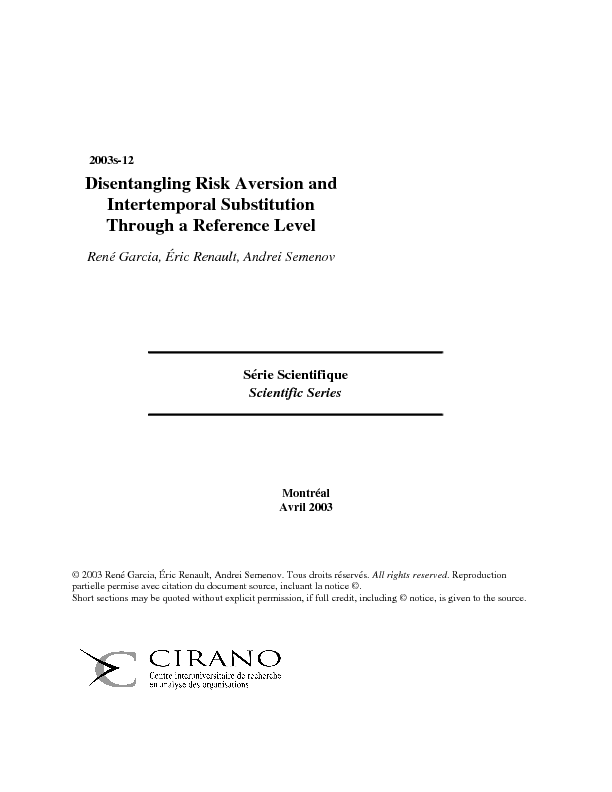Disentangling Risk Aversion and Intertemporal Substitution Through a Reference Level
In the standard consumption capital asset pricing model (CCAPM), the curvature of the investor's utility function captures two aspects of preferences: as the concavity of the function increases so does his aversion to risk as well as his desire to smooth consumption intertemporally. This restriction is not theoretically justified nor empirically supported. To disentangle the two concepts, Epstein and Zin (1989) and Weil (1989) have proposed a recursive utility framework. However, the ensuing risk aversion measure (1-α) should not be considered as a simple Arrow-Pratt index of relative risk aversion that could be interpreted independently of the level of the elasticity σ. The lack of disentangling comes from the fact that the recursive utility model introduces risk aversion through the definition of a certainty equivalent of future utility that mixes attitudes towards risk and intertemporal substitution. We show that the higher σ is (while remaining smaller than one to be realistic), the more (1-α) underestimates the genuine level of risk aversion since a higher σ facilitates intertemporal diversification and thus substantially lowers the level of risk that is significantly borne. We suggest that the requested disentangling may alternatively be obtained by introducing an exogenous reference level which, in a recursive way, assesses the expected future consumption. Therefore, risk aversion is now defined with respect to the unpredictable discrepancy between actual consumption and this reference level (a quantity independent of the attitude towards risk). In this new framework, preferences are represented by a generalized von Neumann-Morgenstern utility specification whereby satisfaction is derived from consumption relative to an external reference level as well as from this reference level itself.
[ - ]




